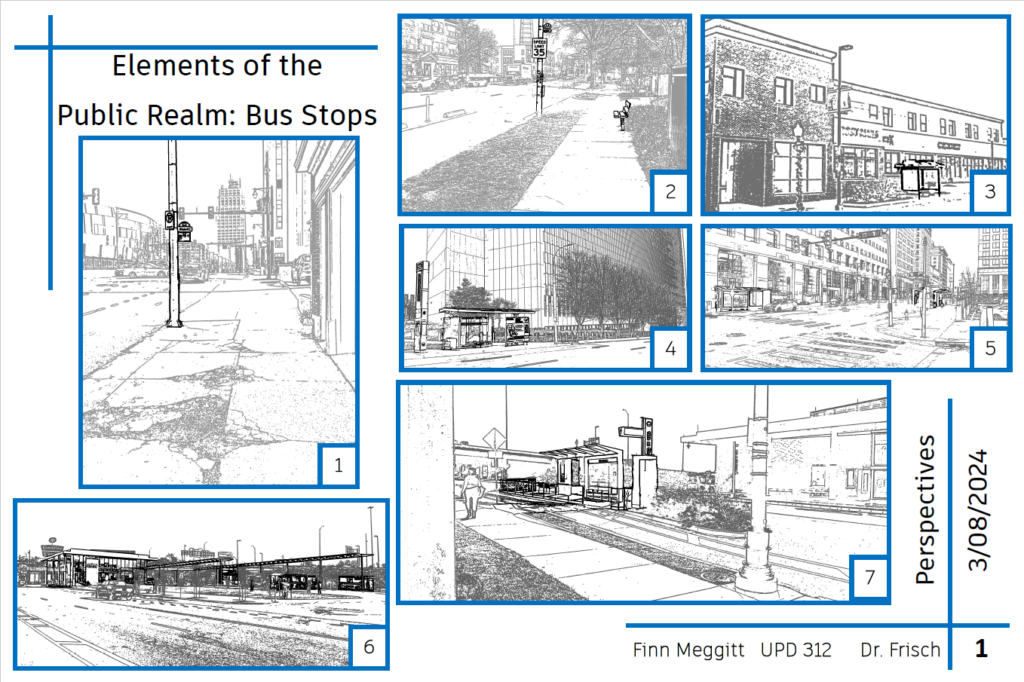The elements of the public realm project was intended for us to analyze the built environment by focusing on the smaller details that make up the built environment. Of course, you can’t focus on everything, so we were all given one small aspect and we analyzed that aspect.

The first board illustrates perspectives of different bus stops from around Kansas City. The perspectives demonstrate the built environment and what makes a good bus stop. The stops go from the worst bus stops, to the best bus stops. The first image is a bus stop around the south loop in downtown Kansas City and the bus stop sign is hidden behind a no parking sign, is adjacent to a highway, and has the picture perfect example of a collapsing sidewalk. The second image is a better bus stop with a bench, that is also in the shade. The bus stop sign is also visible to both pedestrians and bus drivers. The one noticeable issue, and this is the main problem with bus stops, is that they are developed as an after thought when designing the streetscape. The bus stop is behind a protected bike lane. The third image is a bus stop that is completely covered, has some planters, a trash can, and is adjacent to a new mixed-use development. The fourth image is the bus stop next to the federal building. The bus stop is larger than the previous and is better covered and has more seating. The stop also has a trash can and has the metal tower to signal where the bus stop is. The bus stop arrival clock on the tower has been removed however. The fifth image is the first bus stop that was kept in mind when designing the street. The bike lanes go behind it, it is around stuff, and the bus stop is covered and has seating. The infrastructure of the built environment support these bus stops. The sixth and seventh images are of bus stops around the East Village Transit Center and they are examples of great bus stops. They are at grade, have trash cans, supporting active transportation infrastructure, planters, time, bathrooms, railings, and other types of supporting infrastructure. There is one flaw however, that will be touched in the next board.

Board two gives context for the location of the bus stops. The East Village Stops, or numbers 6&7 were the examples of fantastic bus stops in the previous board, but there weakness is illustrated here as there is quite literally nothing around them except a drive-through bank, highways, and parking lots. It was stuffed over there away from everything and it serves more bus lines than anywhere else in Kansas City. The site plans show the infrastructure and whether the bus stops are adjacent to stuff well. The black buildings contrast the other sites to the East Village site, which builds into the last board.

Board three has a section and detailed plan view that illustrates better why bus stop seven is a quality piece of infrastructure. Using the previous information that site from the last two boards and how the only problem that it has is that it’s isolated to create an argument for the intervention. The intervention for this project was to move the East Village Transit Center in front of Union Station. The large site plan gives a few aspects of what makes a good bus stop. The plan is to remove the parking lot in front of Union Station, as there are a lot of parking garages in the surrounding area already, and to add several other bus stops on the surrounding streets. This plan will put bus users front and center in Kansas City. The area around Union Station is a touristy area and is the cultural heart of the city. Moving the transit center signals perfectly a change in direction of Kansas City.